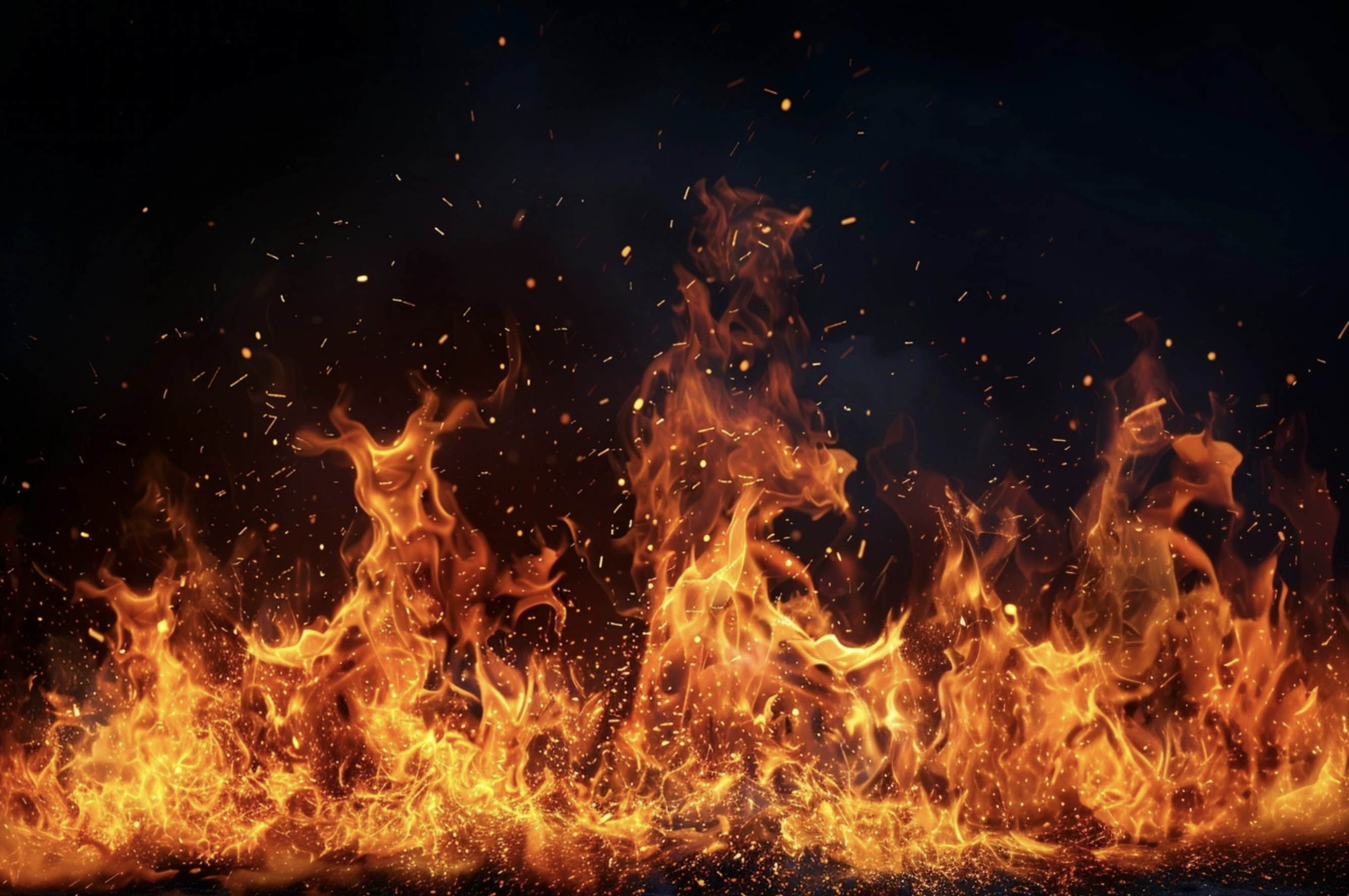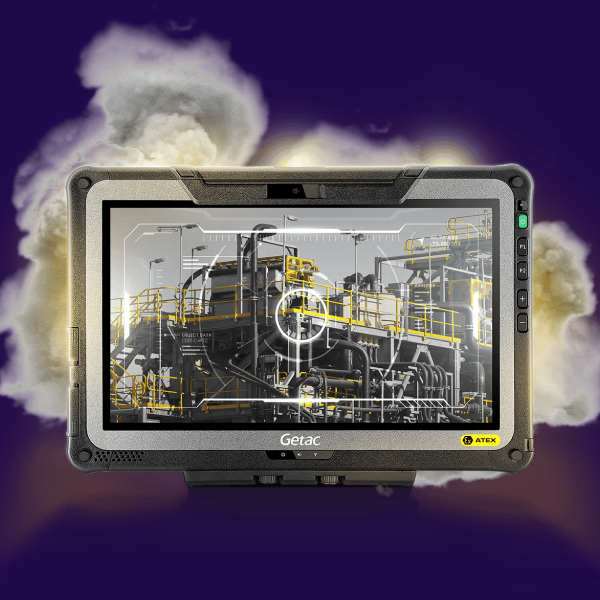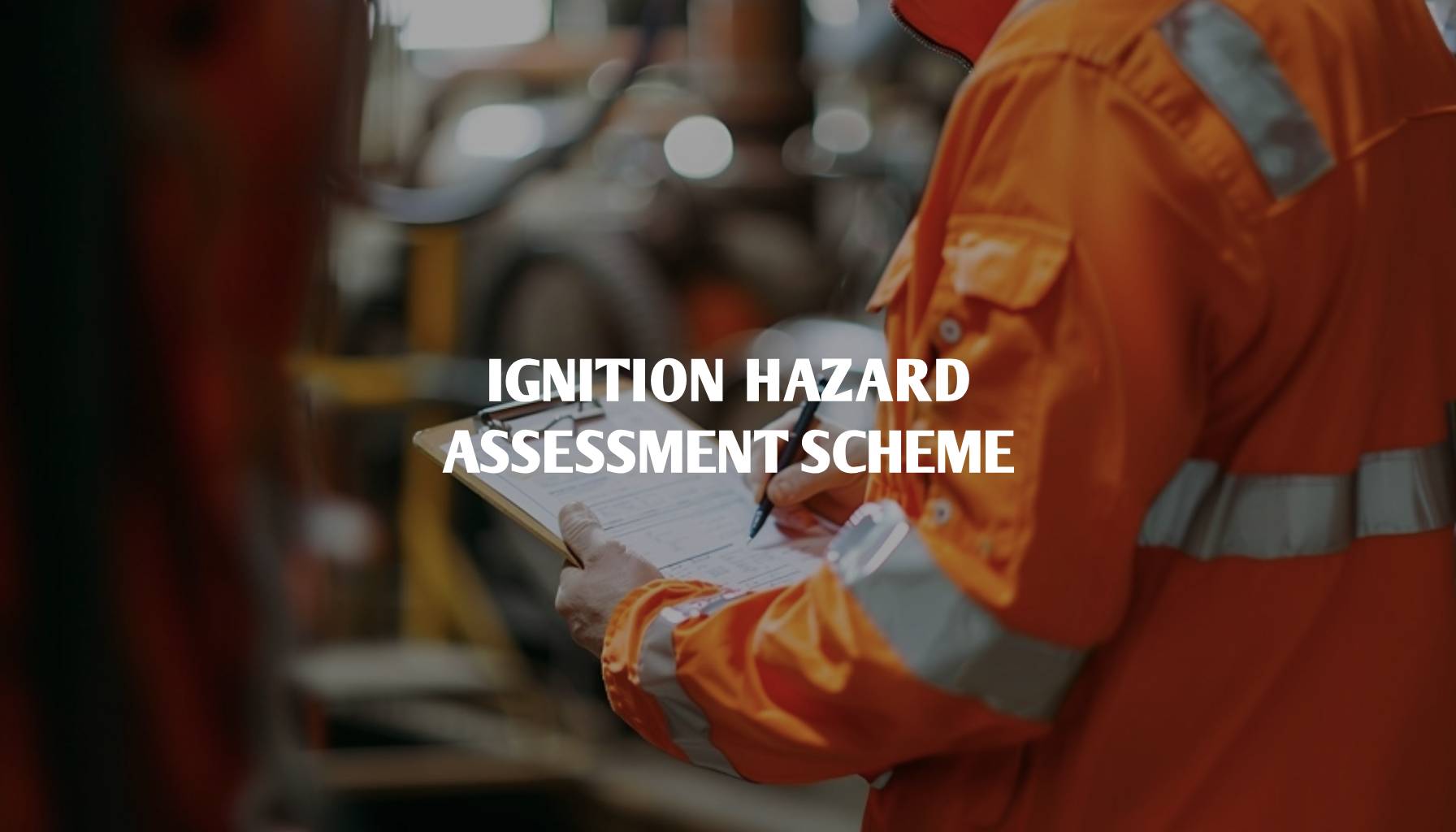In industrial settings, identifying and managing ignition sources is critical for preventing explosions and ensuring safety. This guide explores the various types of ignition sources, their characteristics, and how to assess their potential hazards.
We’ll cover:
- The main types of ignition sources in industrial environments
- Detailed analysis of key ignition sources
- The process of assessing ignition hazards
- Practical application of ignition hazard assessment
This guide is essential for safety engineers, plant managers, and anyone responsible for explosion protection in industrial facilities.

Overview of Possible Ignition Sources
In industrial environments, there are numerous potential ignition sources that must be considered. The following list outlines the 12 main ignition sources as identified by safety standards such as EN 1127-1:
- Hot Surfaces: Equipment surfaces, friction-generated heat, or overheated parts.
- Flames and Hot Gases: Including hot particles from combustion processes.
- Mechanical Sparks: Generated by friction, impact, or abrasion processes.
- Electrical Equipment: Sparking from circuits, connections, or stray currents.
- Static Electricity: Charge build-up and discharge on materials or equipment.
- Chemical Reactions: Exothermic processes, including self-ignition.
- Lightning: Direct strikes or induced currents.
- Electromagnetic Waves: Including radio frequency waves.
- Ionizing Radiation: From radioactive sources or X-ray equipment.
- Ultrasound: High-frequency acoustic waves.
- Adiabatic Compression: Rapid gas compression generating heat.
- Optical Radiation: Including laser beams and focused sunlight.
Each of these sources has the potential to ignite an explosive atmosphere under certain conditions. Understanding these sources is the first step in developing effective prevention and protection strategies in industrial settings.
In the following sections, we’ll delve deeper into some of the most common and critical ignition sources, exploring their characteristics and preventive measures.
Detailed Analysis of Key Ignition Sources
Hot Surfaces
Hot surfaces present a significant ignition risk in industrial environments when their temperature reaches or exceeds the ignition temperature of the surrounding explosive atmosphere. The ignition capability depends on the type and concentration of the flammable substance, as well as the size and shape of the hot surface.
Common sources of hot surfaces include:
- Friction in moving parts (e.g., bearings, seals, shafts)
- Process equipment (e.g., heaters, dryers, reactors)
- Electrical equipment (e.g., motors, transformers)
- Malfunctioning equipment due to inadequate lubrication or cooling
Key considerations:
- The maximum surface temperature of equipment must be established at the highest ambient temperature for which the equipment is designed.
- A safety margin should be maintained between the maximum surface temperature and the ignition temperature of the explosive atmosphere.
- Dust deposits can have an insulating effect, potentially leading to heat build-up and temperature rise.
Prevention and control measures:
- Temperature monitoring systems with automatic shutdown capabilities
- Regular maintenance and lubrication schedules
- Proper insulation and cooling systems
- Selection of equipment with appropriate temperature class ratings (T1-T6)
- Cleaning protocols to prevent dust accumulation on surfaces

Flames and Hot Gases
Flames and hot gases, including hot particles, are among the most effective ignition sources. Even very small flames can ignite explosive atmospheres due to their high temperature and the presence of active chemical species.
Sources of flames and hot gases include:
- Open flames from welding, cutting, or brazing operations
- Exhaust gases from internal combustion engines
- Hot particles ejected from grinding or other high-energy processes
- Smoldering or incompletely extinguished fires
Key considerations:
- Flames can propagate through small openings, potentially igniting explosive atmospheres in adjacent areas.
- Hot gases can carry incandescent particles over considerable distances.
- The ignition capability depends on factors such as flame temperature, size, and duration of exposure.
Control measures:
- Implementation of strict hot work procedures and permit systems
- Use of flame arrestors on equipment exhausts and vents
- Proper design and maintenance of flare systems
- Adequate ventilation systems to disperse hot gases
- Fire detection and suppression systems
- Training programs for personnel on fire prevention and response
Mechanical Sparks
Mechanical sparks are generated by friction, impact, or abrasion processes. These sparks can reach temperatures high enough to ignite flammable gases, vapors, and some dust-air mixtures. The ignition capability of mechanical sparks depends on the materials involved, the energy of impact, and the surrounding atmosphere.
Common sources of mechanical sparks:
- Grinding, cutting, or chipping operations
- Impact of metal objects (e.g., dropped tools)
- Abrasive blasting processes
- Misaligned or malfunctioning rotating equipment
Key considerations:
- Light metal alloys (e.g., aluminum, magnesium) can produce particularly incendive sparks due to aluminothermic (thermite) reactions.
- The size and temperature of sparks depend on the materials involved and the energy of the mechanical process.
- Some dusts, particularly metal dusts, can be ignited by mechanical sparks more easily than gases or vapors.
Preventive measures:
- Use of spark-resistant tools and materials in hazardous areas
- Implementation of proper maintenance procedures to prevent misalignment or excessive wear
- Installation of spark detection and extinguishing systems in dust collection equipment
- Use of explosion-proof enclosures for rotating equipment
- Limiting the speed of moving parts (periphery speed less than 1 m/s is generally considered safe)
- Training personnel on proper handling of tools and equipment in hazardous areas
By understanding these ignition sources in depth, industrial operators can implement more effective prevention and protection strategies, significantly reducing the risk of explosions in their facilities.
Electrical Equipment
Electrical equipment is a prevalent ignition source in industrial environments, capable of producing sparks or hot surfaces even at low voltages. The risk of ignition from electrical equipment is particularly significant due to its widespread use and the variety of potential failure modes.
Common sources of electrical ignition:
- Make-and-break contacts in switches, relays, and motor brushes
- Loose connections leading to arcing or overheating
- Faulty wiring or insulation breakdown
- Overloaded circuits causing excessive heat generation
- Static electricity discharge from charged equipment
Key considerations:
- The energy required for ignition varies widely depending on the flammable substance and its concentration.
- Intrinsically safe circuits are designed to limit energy release, reducing ignition risk.
- Electrical equipment can also indirectly cause ignition by heating surrounding materials.
Prevention and control measures:
- Use of appropriately rated explosion-proof or intrinsically safe equipment
- Regular electrical system inspections and maintenance
- Proper grounding and bonding of electrical equipment
- Implementation of overload protection devices
- Use of sealed or purged enclosures for electrical equipment in hazardous areas
- Training for personnel on electrical safety in explosive atmospheres
All of our Ex Equipment is certified for ATEX, IECEx or NEC and therefore the risk of electrical sparking is minimized according to the risk level. A good example is the ATEX Tablet below by Getac, certified for ATEX/IECEx Zones 2 and 22.

Static Electricity
Static electricity poses a significant ignition risk, particularly in operations involving non-conductive materials or rapid movement of fluids or powders. The accumulation and sudden discharge of static electricity can provide sufficient energy to ignite many flammable atmospheres.
Key areas of concern for static electricity:
- Fluid flow in pipes or during transfer operations (especially for low-conductivity liquids)
- Belt drives and conveyor systems moving non-conductive materials
- Pneumatic transport of powders or granular materials
- Clothing and footwear of personnel, especially in low-humidity environments
- Plastic materials and containers
Key considerations:
- The rate of charge generation often exceeds the rate of charge dissipation in non-conductive systems.
- Humidity levels below 30% significantly increase static electricity risks.
- Even small amounts of static charge can ignite some highly sensitive materials.
Control measures:
- Proper grounding and bonding of all conductive equipment and containers
- Use of static-dissipative materials for floors, work surfaces, and clothing
- Installation of ionizers or humidity control systems in sensitive areas
- Limiting flow velocities in pipes and during liquid transfers
- Implementing appropriate earthing procedures for personnel working in hazardous areas
- Regular testing of ground connections and antistatic equipment
Chemical Reactions
Some chemical reactions can generate heat and potentially lead to ignition, either of the reacting substances themselves or surrounding flammable atmospheres. Understanding and controlling these reactions is crucial for preventing ignition incidents.
Types of chemical reactions posing ignition risks:
- Self-heating substances that slowly oxidize, leading to temperature increase
- Pyrophoric materials that ignite spontaneously upon exposure to air or moisture
- Decomposition of unstable compounds, releasing heat and potentially flammable gases
- Exothermic reactions that generate more heat than can be dissipated to the surroundings
Key considerations:
- The risk of ignition depends on factors such as reaction rate, heat generation, and heat dissipation.
- Scale-up of chemical processes can significantly alter heat transfer characteristics and increase ignition risks.
- Catalysts or contaminants can sometimes accelerate reactions unexpectedly.
Preventive strategies:
- Thorough understanding of the reactivity and thermal stability of materials used in industrial processes
- Proper material storage and handling procedures, including temperature control and inert atmospheres where necessary
- Implementation of process safety management systems
- Use of inhibitors or stabilizers for reactive materials when appropriate
- Design of adequate cooling systems for exothermic processes
- Regular review and update of safety data sheets and chemical inventories
- Training of personnel on the hazards associated with reactive chemicals and proper emergency response procedures
By comprehensively addressing these key ignition sources, industrial facilities can significantly reduce the risk of explosions and create a safer working environment. It’s crucial to regularly review and update ignition prevention strategies as processes or materials change.
Assessing Ignition Hazards
Conducting a thorough ignition hazard assessment is crucial for identifying and mitigating potential risks in industrial environments. This process involves systematically evaluating equipment and processes to determine the likelihood of ignition sources becoming effective.
Key Components of Ignition Hazard Assessment:
- Identifying Potential Ignition Sources:
- Utilize the list of possible ignition sources from Section 1
- Consider both obvious and less apparent sources specific to your processes
- Categorizing Operational Conditions:
- Normal operation
- Expected malfunctions
- Rare malfunctions
- Assessing Likelihood and Consequences:
- Evaluate the probability of each ignition source becoming effective
- Consider the potential impact if ignition occurs
- Determining Equipment Category:
- Based on ATEX Directive 2014/34/EU for equipment in potentially explosive atmospheres
- Categories 1, 2, and 3 correspond to very high, high, and normal levels of protection respectively
Ignition Hazard Assessment Scheme:
The assessment typically follows a structured approach:
- List all possible ignition sources
- Determine if the source is equipment-related
- Describe circumstances that could trigger the source
- Assess the basic likelihood of occurrence
- Identify and document preventive measures
- Re-evaluate the likelihood after preventive measures
- Determine the resulting equipment category
Expected vs. Rare Malfunctions:
Understanding the distinction between expected and rare malfunctions is crucial for proper categorization:
- Expected malfunctions: Occurrences known from practical experience or reasonably anticipated based on the nature of the equipment or process.
- Rare malfunctions: Fault conditions that are theoretically possible but have not occurred in practice with a large number of similar applications.
Key considerations:
- Fault statuses known from practice should be classified as expected malfunctions.
- The simultaneous occurrence of two expected malfunctions may be categorized as a rare malfunction.
- Combinations of one expected and one rare malfunction, or more improbable combinations, typically do not need consideration.
Documentation and Review:
- Document all steps of the assessment process
- Include justifications for decisions made
- Regularly review and update the assessment, especially when processes or equipment change
By following this structured approach to ignition hazard assessment, industrial operators can systematically identify and address potential ignition risks, ensuring a higher level of safety in their facilities. This process not only aids in compliance with safety regulations but also contributes to overall risk reduction and improved operational reliability.
Practical Application
To illustrate the practical application of ignition hazard assessment, let’s consider a brief example:
Example: Assessing a Centrifugal Pump in a Flammable Liquid Transfer System
- Identify potential ignition sources:
- Hot surfaces (bearings, mechanical seal)
- Mechanical sparks (misalignment, dry running)
- Static electricity (fluid flow)
- Assess under different conditions:
- Normal operation: Low risk with proper maintenance
- Expected malfunction: Bearing overheating due to lubrication failure
- Rare malfunction: Catastrophic seal failure leading to dry running
- Implement preventive measures:
- Temperature monitoring on bearings
- Proper grounding and bonding
- Dry-run protection system
- Re-evaluate and categorize:
- With preventive measures in place, categorize as Equipment Category 2
This simplified example demonstrates the process of identifying, assessing, and mitigating ignition risks in industrial equipment.
Conclusion:
Understanding and managing ignition sources is crucial for maintaining safety in industrial environments with potentially explosive atmospheres. By systematically identifying potential ignition sources, assessing their likelihood under various operational conditions, and implementing appropriate preventive measures, industries can significantly reduce the risk of explosions.




